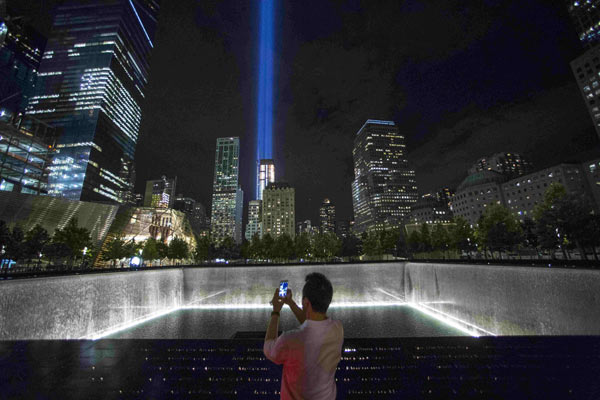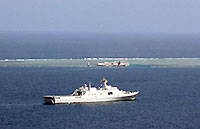15 years after 9/11, Manhattan area 'on the rise'
By Amy He in New York (China Daily) Updated: 2016-09-11 08:32
 |
|
A man takes a photo at the 9/11 Memorial and Museum near the Tribute in Light in Lower Manhattan, New York, September 9, 2015. [Photo/Agencies] |
Employment, which was badly affected by the attacks, is at its highest since that time. Total private sector jobs reached 228,300 last year, compared with 270,000 in 2000.
The Lower Manhattan area has historically been home to many financial institutions in New York City, and they are still the predominant industry in the area, the report said.
"A number of firms relocated outside of Lower Manhattan as part of an effort to enhance their geographic diversity and minimize the impact of another attack. Some moved to Midtown Manhattan, while others moved across the river to New Jersey," it said.
Commercial real estate has rebounded, though many of the older commercial buildings in the area have been converted to residential buildings.
Tourism to the area remains important to the city, despite being affected in the immediate aftermath of the 9/11 attack, which destroyed the World Trade Center.
The National September 11 Memorial and Museum and the newly completed World Trade Center Transportation Hub, Fulton Transit Center and Brookfield Place draw major crowds.
"Lower Manhattan has made a dramatic comeback over the last 15 years, but very much so over the last year, with major openings and developments," said Fred Dixon, president and CEO of NYC & Co, the city's tourism marketing agency.
"Downtown is a pillar of the 'new' New York. Tourism to the area is certainly very important to our overall visitor economy. The sheer number of new openings including hotels, attractions, shops, restaurants and transportation offerings makes it an attractive draw for both visitors and New Yorkers alike," he said.
More than 23 million tourists visited the September 11 Memorial last year, and 4 million visited the memorial museum, according to the report.
amyhe@chinadailyusa.com







